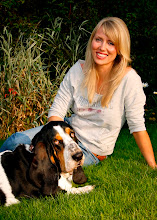Following our series on our pet’s senses, we have a ‘look’ at the sense of sight.
Most pet owners know their dog’s vision differs from a human’s, and for many years we believed dogs were colour blind and had very poor vision. However, this isn’t true.
For humans, our visual system uses a greater proportion of our brain more than any other creature.
This means we interpret the environment based on what we see, more than any other sense. Dogs’ vision is not as dominant as our own; their interpretation of the environment is less strongly on what they see, but rather what they smell and hear. Dogs’ eyes are placed more to the side of their heads, giving them a more panoramic view of the world, and a greater sensitivity to peripheral movement compared to humans. However, their close up vision is poor; they have a panoramic field of vision of 250-270 degrees, and their binocular vision varies from breed to breed. The more a dog sees laterally, the less well it sees straight ahead. Lack of binocular vision means the individual will experience distortions in depth perception and visual measurement of distance. Pekinese dogs, for example, have a binocular vision around 85 degrees, Greyhounds around 75 degrees, and humans have approximately 140 degrees. So, a human may clearly see an object but to the dog this might appear blurred from the same distance. At a rough estimate, dogs have about 20/75 vision. This means they can see at 20 feet what a normal human could see clearly at 75 feet. A dog will track its prey with its sense of smell, but when it comes close enough to see the prey, his sense of sight confirms his trail. However, the prey may run away as the dog approaches, and once it’s in motion it’s far easier for the dog to track, as its eyes become more ‘useful information gathering devices’. Because of this, many prey animals have evolved the instincts to take advantage of the dog’s visual limitations; the potential ‘kill’ will freeze as an effective way to elude detection by the dog, this is because when something is motionless it becomes virtually invisible to a dog. Dogs are primarily diurnal, meaning they are more active around dusk and dawn. In order to see more efficiently in low light, unlike humans, dogs have a layer of tissue located behind the retina called the tapetum lucidum. This acts like a sort of mirror, where light bounces of it increasing the sensitivity of the eye in dim light. We can often see the visible effect of the tapetum at the flash of a camera when taking our dog’s picture, as the dog’s eyes appear to shine.
Dogs’ can see colour but it is secondary to their needs, as twilight and night-time activity requires sensitivity to low levels of brightness. Both human and dog eyes are lined with rods and cones; these give us our ability to see small details and are responsible for the perception of colour. Dogs have significantly more rods than cones in their eyes. Each cone contains a ‘photopigment’ that is sensitive to a separate wavelength of light, and these photopigments are what makes colour perception possible. Studies have proven that dogs have colour vision, and they see in rudimentary colour such as yellows, greens and blues.
skip to main |
skip to sidebar

Welcome to Walk the Dog's blog page. Walk the Dog is a pet care company in Hertfordshire, UK. Our blog gives you lots of useful information about canine behaviour, care and development, plus the latest news from WTD and our dog behaviour specalist, Hanne Grice - Dog Listener. Visit our website at www.walk-the-dog.net and our dog problems website at www.doglistener.tv
Recommended reading
Followers
Blog Archive
-
▼
2010
(35)
-
▼
January
(19)
- WTD wins Business Excellence AwardWalk the Dog has...
- Cold weather safety tips for your pets
- Dog aggression
- Understanding your cat
- Dogs and babies
- Understanding your dog - canine body language and ...
- Dog problems - Boredom Busters
- Puppies – the secret to having a happy and well be...
- Games Corner - 'Hide and Seek’
- Who's walking who? Teaching your dog to walk to heel
- Games Corner; Teach your dog to shut the door!
- A dog's sense of sight
- Rabbits & Rodents - top tips for a healthy and hap...
- Dealing with pet emergencies
- Walk the Dog Puppies - puppy classes in Hertfordshire
- Research shows misunderstanding of dogs
- Dogs and cats - can they get along?
- A dog's sense of taste
- Top tips for having a safe Christmas
-
▼
January
(19)
About Me

- Walk the Dog
- A lifetime love of animals led Hanne to start Walk the Dog. Hanne is a Highly Recommended Associate Jan Fennell Dog Listener. She is qualified in canine psychology at advanced level and canine behaviour, care and development, and holds the advanced level certifcate in Canine Communication. Walk the Dog is a multi-award winning company. Members of; JFDL, APDT, PAACT, ABS, ASAB, ABMA and NARP.
